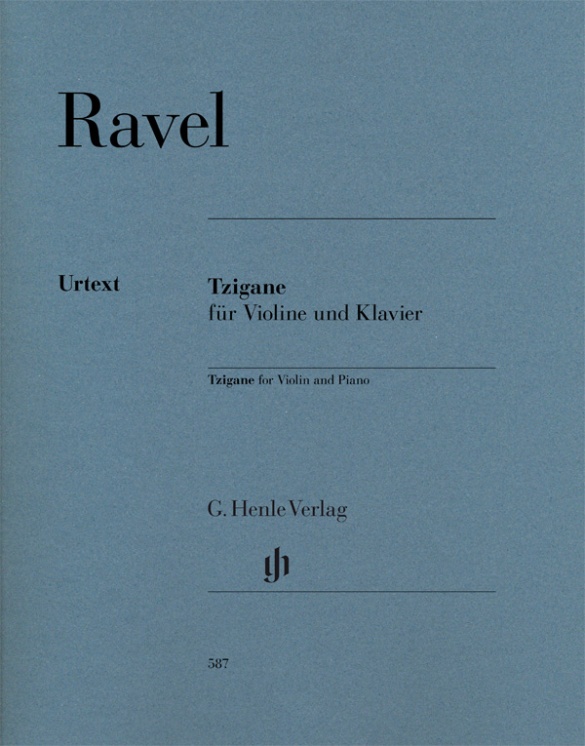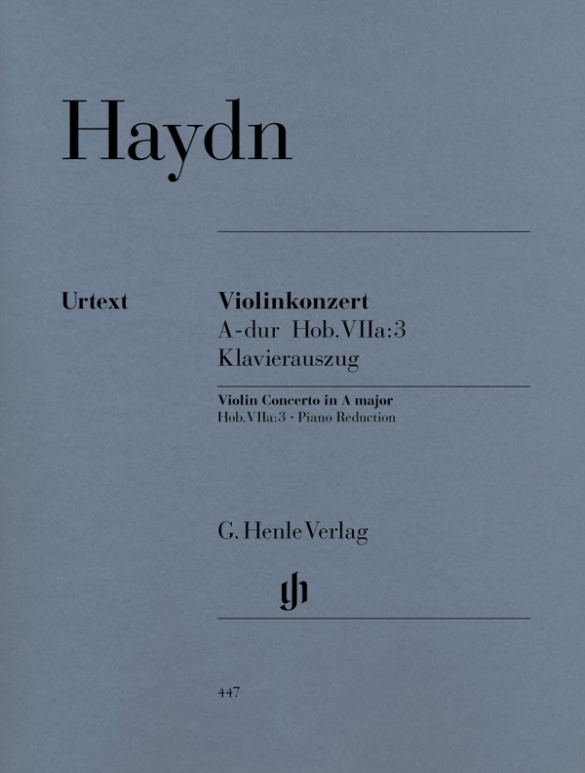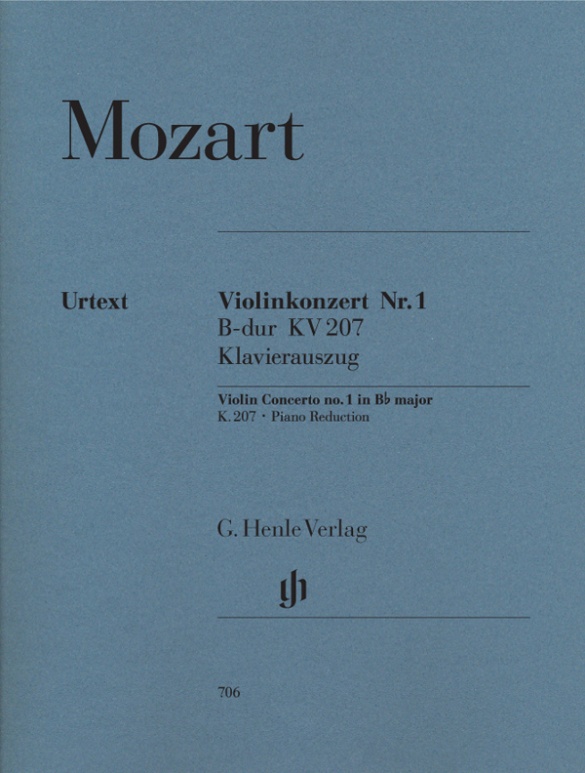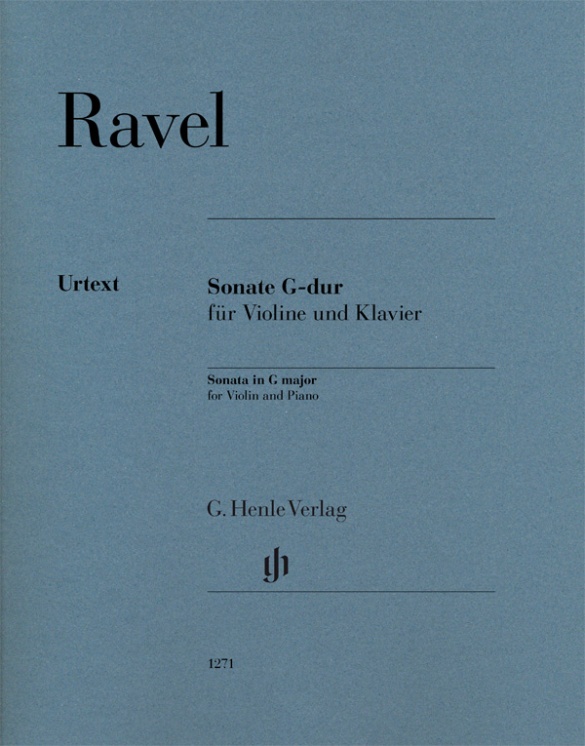

Maurice Ravel
Violin Sonata G major
Inspired by Béla Bartók’s violin sonatas, Ravel planned his own sonata for violin and piano in 1922, but at first did not get beyond sketches. Many interruptions ensued and the work was only finished in 1927. He dedicated it to his violinist friend Hélène Jourdan-Morhange. Regarding the sonata’s sparse, thinned out compositional structure and instrumentation, Ravel later emphasized that the sonata proved the tonal incompatibility of the violin and piano. Yet it still succeeded in winning a permanent place in violin repertoire – not least because of its middle movement inspired by jazz elements and the “blues”. The fingerings in this Henle Urtext edition have been provided by two masters of their instruments: Christian Tetzlaff and Pascal Rogé.
Content/Details
(Explanation)
About the Composer
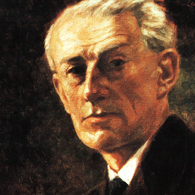
Maurice Ravel
Together with Satie and Debussy, Ravel numbers among the innovators who had a falling out with academic education and created their own avant-garde tonal languages – inspired, in Ravel’s case, by Russian and Spanish music, but also by exoticism – without abandoning tonality. This master of orchestration begins with piano works, which he orchestrates; songs with piano and piano compositions exist on an equal footing in orchestral versions.
| 1875 | Born in Ciboure on March 7; the family moves to Paris that same year. |
| 1882 | Lessons in piano, theory, and composition. |
| 1889 | Beginning of his studies at the Conservatoire de Paris, from which he will never graduate.around 1893 Influence of Chabrier and Satie. |
| 1901 | “Jeux d’eau” for piano, in a new “Impressionist” tonal language, as is “Miroirs” (1904–05). |
| 1903 | “Shéhérazade” for voice and piano/orchestral accompaniment with orientalist tonal elements. |
| 1905 | Scandal surrounding Ravel’s third application for the Prix de Rome. |
| 1907 | Premiere of the “Histoires naturelles” after Jules Renard provokes astonishment in audiences and critics. |
| 1907–08 | Rhapsodie espagnole for orchestra. |
| 1908/10 | “Ma mère l’oye” (“Mother Goose”) for piano, four-hands, as a ballet in 1911. |
| 1911 | Premiere in Paris of his opera “L’Heure espagnole.” |
| 1911/12 | “Valses nobles et sentimentales” for piano/orchestra. Premiere of the ballet “Daphnis et Chloé” in 1912. |
| 1914/19 | “Le tombeau de Couperin” for piano/orchestra anticipates the coming neoclassicism. |
| from 1920 | Many concert tours through Europe and the United States. |
| 1925 | Premiere of his opera “L’Enfant et les sortilèges.” |
| 1928 | Conferral of an honorary doctorate from Oxford University. “Bolero” for orchestra. |
| 1929–31 | Piano Concerto in G major with elements of jazz. |
| 1937 | Death in Paris on December 28. |
About the Authors
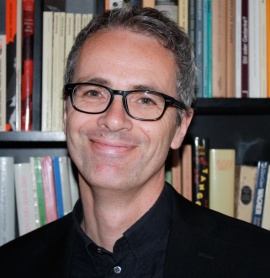
Ulrich Krämer (Editor)
Dr. Ulrich Krämer, born in 1961 in Bielefeld, is Head of the Research Centre at the Arnold Schönberg Complete Edition in Berlin. He read musicology and German in Hamburg and Bloomington and wrote his doctoral thesis under the supervision of Rudolf Stephan on Alban Berg as a pupil of Arnold Schönberg.
In addition to his editorial work, he has been a lecturer at the Hochschule für Musik “Hanns Eisler” and at the Berlin University of the Arts, as well as “Visiting Scholar” at the Graduate Center at the City University New York. Alongside the volumes he has prepared for the Schönberg Complete Edition (including the score of the Gurre Lieder which was awarded the Deutsche Musikeditionspreis), his scholarly publications include editions of Alban Berg’s student compositions and Theodor W. Adorno’s compositions found in his estate, as well as essays and articles on Brahms, Berg, Schönberg, Ravel and Astor Piazzolla.
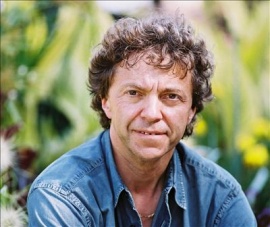
Pascal Rogé (Fingering)
Product Safety Informations (GPSR)

G. Henle Verlag
Here you can find the information about the manufacturer of the product.G. Henle Verlag e.K.
Forstenrieder Allee 122
81476 München
Germany
info@henle.de
www.henle.com
A supplementary violin part adroitly marked by Christian Tetzlaff with piano fingering by Pascal Rogé complements this fastidious new Henle urtext. (...) Fold-out pages for the last two movements facilitate fluency.
Stings Magazine, 2017recommendations
autogenerated_cross_selling
Further editions of this title
Further editions of this title


